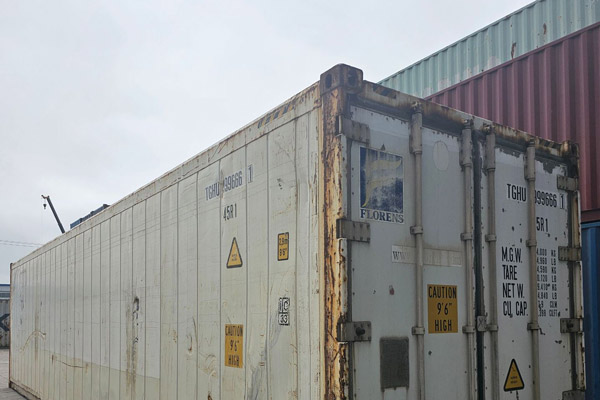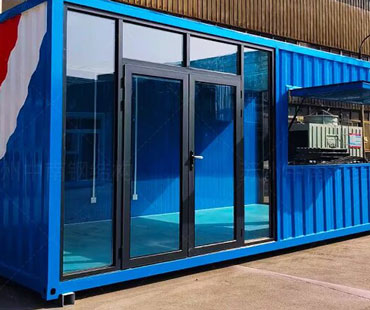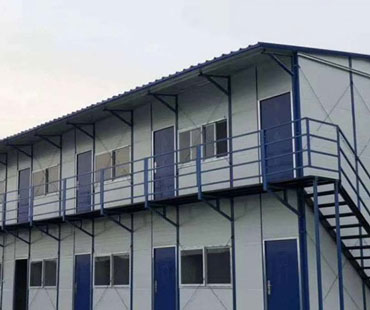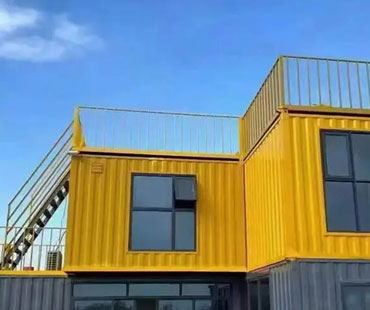The humble shipping container, once relegated to the realm of freight transport, has undergone a remarkable transformation over the years. Originally designed for the efficient movement of goods across oceans and continents, these robust metal boxes have evolved into innovative solutions for various applications, including housing, offices, and even community spaces.
The concept of the shipping container emerged in the 1950s, revolutionizing global trade. Prior to its invention, goods were loaded and unloaded individually, a labor-intensive and time-consuming process. The introduction of standardized containers allowed for the efficient loading and unloading of cargo ships, significantly reducing shipping times and costs. This innovation not only streamlined logistics but also paved the way for globalization, enabling businesses to expand their reach and connect with markets worldwide.
As the shipping container gained prominence in the logistics sector, architects and designers began to recognize its potential beyond freight transport. The durability and modularity of containers made them an attractive option for creative repurposing. In the late 20th and early 21st centuries, the concept of container architecture began to take shape, with practitioners experimenting with the structural possibilities of these metal boxes.
The first notable projects emerged in urban areas, where containers were transformed into pop-up shops, cafes, and art installations. These projects highlighted the versatility of shipping containers and their ability to adapt to various environments. The ease of transport and assembly, combined with their relatively low cost, made them an appealing choice for entrepreneurs and artists looking to create unique spaces.
The trend towards container architecture gained further momentum in response to the global housing crisis. As urban populations surged and housing prices skyrocketed, architects sought innovative solutions to address the growing demand for affordable housing. Container homes emerged as a viable option, offering a quick, sustainable, and cost-effective alternative to traditional residential construction.
Container homes can be designed to meet a variety of aesthetic and functional needs. They can be stacked, combined, and modified to create spacious living environments that are both practical and stylish. Additionally, many container homes incorporate sustainable building practices, such as solar panels, rainwater harvesting systems, and energy-efficient insulation, making them eco-friendly choices for the modern homeowner.

The versatility of shipping containers extends beyond residential applications. In recent years, there has been a surge in the use of containers for commercial purposes. Businesses have embraced container design to create temporary offices, retail spaces, and even restaurants. The modular nature of containers allows companies to easily expand or relocate their operations as needed, providing flexibility in an ever-changing market.
Moreover, the rise of remote work has led to innovative uses of shipping containers as co-working spaces. These repurposed containers can be found in urban centers, offering freelancers and startups a unique and cost-effective environment to collaborate and create. With the right design, containers can be transformed into vibrant, functional spaces that foster creativity and productivity.
Beyond individual use, shipping containers have also been deployed in community development projects. From educational facilities to emergency housing in disaster-stricken areas, containers have proven to be invaluable tools in addressing social challenges. Their adaptability allows for quick deployment and assembly, making them ideal for humanitarian efforts.
Community organizations and governments have recognized the potential of containers to create inclusive spaces that promote social interaction and engagement. Container parks, for instance, have transformed underutilized urban areas into lively hubs for commerce, culture, and community gatherings. These initiatives not only revitalize neighborhoods but also foster a sense of community and belonging.
As we look to the future, the evolution of container design shows no signs of slowing down. Architects, designers, and innovators continue to explore new ways to harness the potential of shipping containers, pushing the boundaries of what these structures can achieve. Emerging technologies, such as 3D printing and smart home systems, are being integrated into container design, further enhancing their functionality and appeal.
Furthermore, the growing emphasis on sustainability and eco-friendly practices will likely drive the continued evolution of container architecture. As urbanization accelerates and environmental concerns mount, the demand for sustainable, adaptable living and working spaces will only increase.
The evolution of container design from traditional freight transport to multi-functional living spaces exemplifies the power of innovation and creativity in addressing contemporary challenges. As shipping containers continue to be repurposed for diverse applications, they embody a spirit of adaptability and resilience that resonates with the needs of our rapidly changing world. Whether as homes, offices, or community spaces, the potential of shipping containers is limited only by our imagination, paving the way for a more sustainable and inclusive future.


